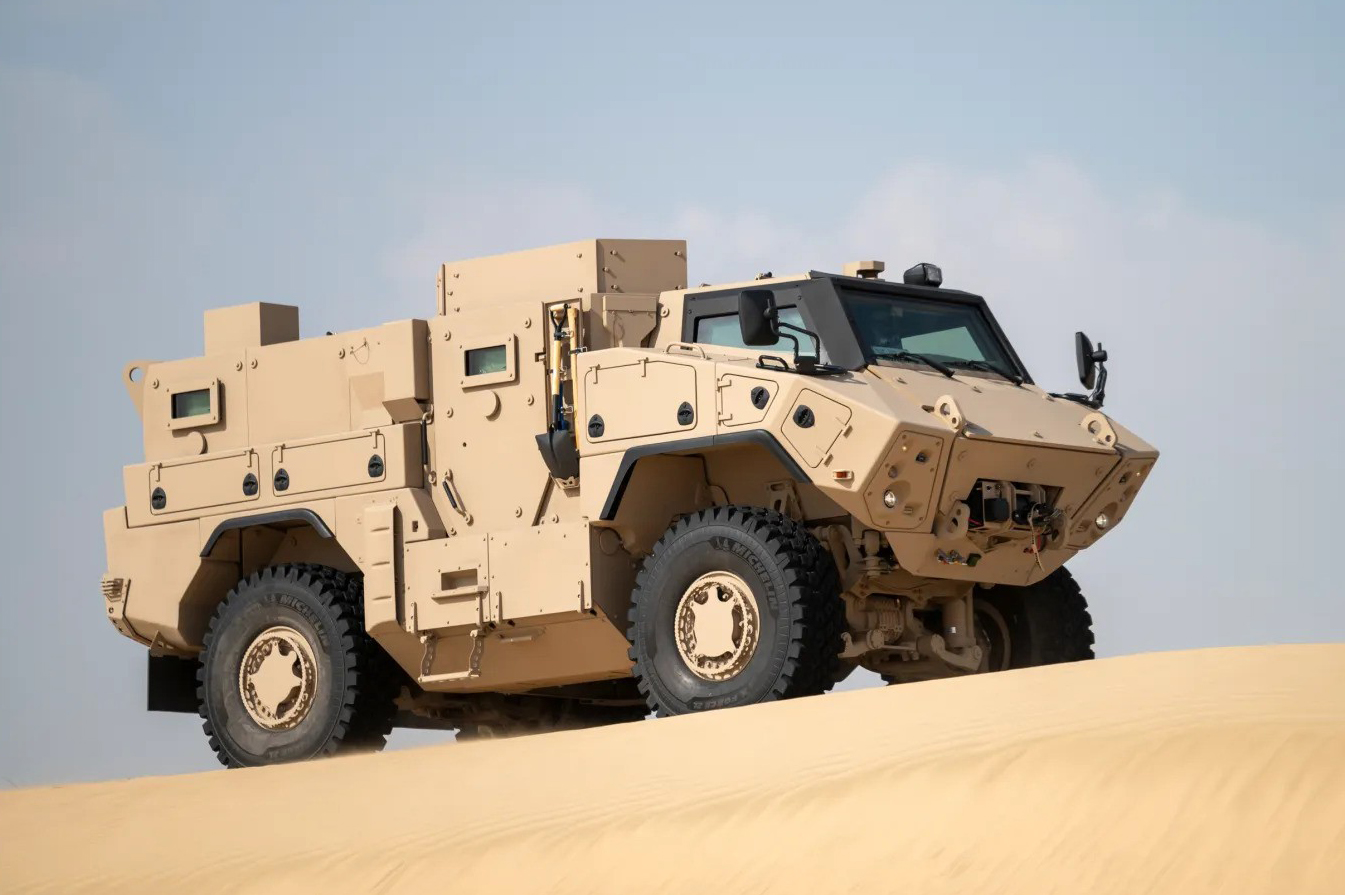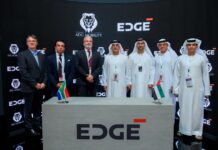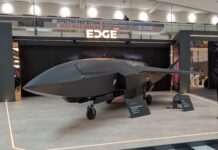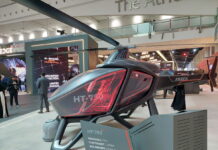During World Defense Show 2024, held in Riyadh from 4-8 February, the Nimr consortium from the United Arab Emirates (UAE) promoted its steadily growing offering, with a new Mk 2 variant of the Jais 4×4 mine-resistant ambushed-protected vehicle (MRAP) making its debut at the exhibition.
The chief executive of parent company EDGE Group, Abri du Plessis, called the Jais Mk 2 “a significant landmark for Nimr”.
In recent years the UAE has made significant progress in building indigenous defence capabilities. In the AFV domain these include not only repair capabilities but also design and production prowess, of which the Nimr vehicle family is a good example. As well as the Jais 4×4, Nimr’s portfolio includes the Jais 6×6 variant, Ajban Mk 2 4×4 protected light patrol vehicle and Hafeet Mk 2 6×6 armoured personnel carrier (APC). The company was established in 2000 and since then has produced over 2,500 vehicles in its domestic facilities in Abu Dhabi.
The Jais is designed for both conventional tasks and special operations, including in urban terrain against irregular forces. According to the manufacturer, the Jais Mk 2 features enhanced protection for critical systems and improved mobility without an increase in total weight. The Mk 2 variant also features an upgraded electrical system, increased payload capacity and more loading space. According to the manufacturer, the vehicle also has reduced thermal and electromagnetic signatures.
Saudi Arabia, the defence spending of which decreased by 12.4% to USD 46 billion (EUR 42.8 billion) between 2021 and 2022, is perceived by the United Arab Emirates as a key partner in the Nimr vehicle family programme. During the previous edition of the World Defense Show in 2022 Nimr entered into an agreement with Saudi Arabian Military Industries (SAMI) to transfer production technologies for the Jais 4×4 from the UAE to Saudi Arabia. The deal involves 149 vehicles, with the Saudi defence industry tasked with integrating these vehicles with local systems. If the contract expands, and Riyadh opts to acquire more vehicles, there is a likelihood that production of the vehicles will be moved, at least partially, to Saudi Arabia.
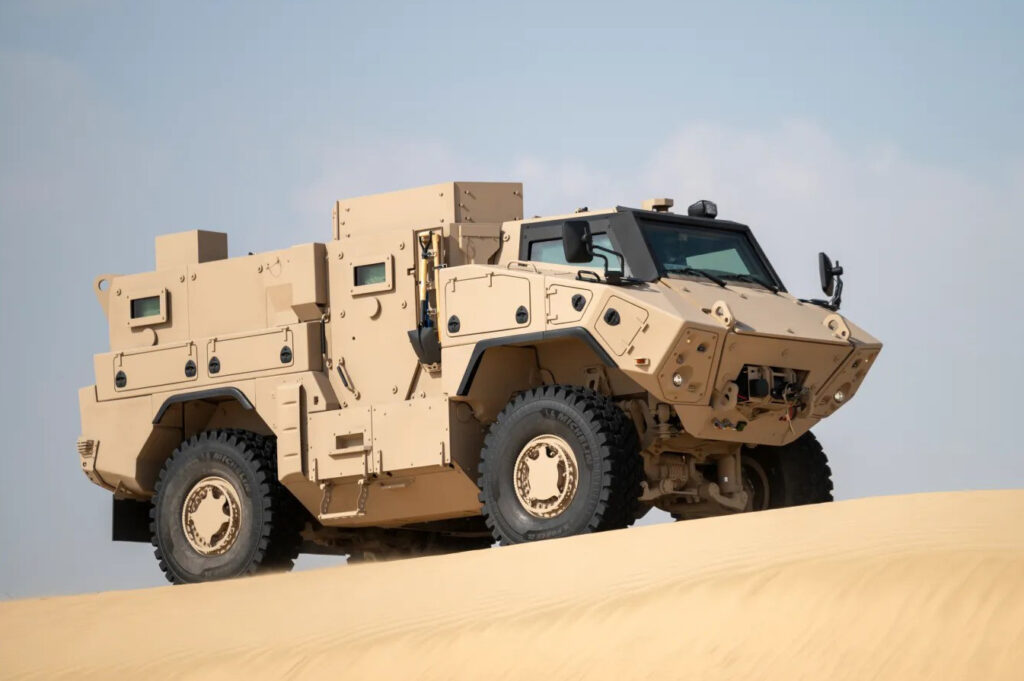
In addition to the Jais Mk 2 EDGE also showcases the Hafeet Mk 2 in a 6×6 configuration featuring a 360 HP engine capable of speeds up to 110 km/h. The manufacturer emphasises that this vehicle has been built in a modular form, allowing several components, such as the powerpack, to be quickly removed. It can be configured into several variants, including an APC, ambulance, surveillance platform and observation vehicle.
The Ajban Mk 2, also featured at WDS 2024, was unveiled by EDGE during the IDEX 2021 defence exhibition in Abu Dhabi. Additionally, there is the Ajban LRSOV variant designed for long-range reconnaissance missions, particularly in challenging terrain and weather conditions such as desert environments. This vehicle can be transported by helicopter.
This Ajban family further includes a VIP armored transport vehicle, an internal security vehicle, a special operations vehicle, the Ajban 450 logistics and utility vehicle and the Ajban 440A infantry mobility vehicle.
Meanwhile, EDGE is to provide the UAE Ministry of Defence with 200 rotary-wing unmanned aerial vehicles (UAVs) to be manufactured by Anavia: a Swiss company specialising in the design and manufacture of unmanned vertical take-off and landing (VTOL) UAVs weighing up to 750 kg. EDGE acquired a 52% majority shareholding in Anavia in November 2023. The contract with the UAE government represents the largest ever awarded to Anavia.
The Anavia contract entails the delivery of two types of UAV – the HT-100 and the larger HT-750 – aimed at enhancing the UAE’s VTOL capabilities. Both systems are designed to perform intelligence, surveillance and reconnaissance duties or logistic missions. The HT-100 has an endurance of 250 minutes and has a maximum airspeed of 120 km/h. According to the manufacturer, it can deliver payloads of up to 50 kg over distances of 100 km, 40 kg over 200 km, 30 kg over 300 km, or 20 kg over 400 km. The system’s maximum take-off weight is 120 kg, with an operating ceiling of 3,000 m. Technical data regarding the HT-750 has not been made public.



